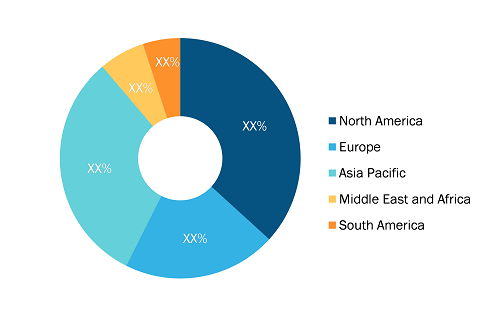Growing Adoption of Renewable Energy is Boosting Wind Turbine Tower Market Growth
According to our latest market study on "Wind Turbine Tower Market Forecast to 2030 – Global Analysis – by Tower Type and Deployment Type," the market was valued at US$ 8,912.1 million in 2022 and is expected to reach US$ 16,438.5 million by 2030; it is anticipated to register a CAGR of 8% from 2022 to 2030.
Wind towers are mainly made of steel, which accounts for almost 66–79% of total turbine cost; followed by fiberglass, plastic, or resin (11–16%); iron (5–17%); and copper and aluminum (1–2%). Wind turbine towers are predominantly made of steel. The growing commercial and technological advancement is anticipated to lower the manufacturing cost of wind turbine towers. The declining prices of steel, which is the main material for wind turbine towers, is one of the major reasons for the dropping cost of wind energy. In 2021, the steel prices were approximately US$ 1,000 per tonne, and it dropped almost 40% and reached US$ 570–590 per tonne in 2022. The instability of demand for steel in the domestic market of China and the increasing export of steel from China is impacting the steel prices at the global level. The continuous downturn of steel prices is reducing the overall operational expenses of the wind projects. The declining operation cost of wind energy projects is positively impacting the wind energy sector, which is boosting the wind turbine tower market growth.
Wind Turbine Tower Market Share — by Region, 2022
Wind Turbine Tower Market Size and Forecast (2020 - 2030), Global and Regional Share, Trend, and Growth Opportunity Analysis Report Coverage: By Tower Type (Tubular Steel Towers, Lattice Towers, Hybrid Towers); Deployment Type (Onshore, Offshore), and Geography
Wind Turbine Tower Market Size and CAGR by 2030
Download Free Sample
Source: The Insight Partners Analysis
Onshore wind energy is the power generated by wind turbine towers located on land driven by the natural movement of air. The onshore wind blows from the sea toward land. Since onshore wind energy has been used for the longest time, it is most widely adopted across the world. In terms of cost, the infrastructure required for electricity transmission onshore is significantly cheaper than that in offshore turbine towers. Owing to the affordable cost, offering power to consumers is also economical, which makes it a more popular source of renewable power. It also has minimal maintenance costs. Onshore wind energy offers one of the most sustainable sources of electricity in most of the countries across the world. It is a major trend in a global energy transition, which accelerates the growth of the wind turbine tower market for the onshore segment.
The US is a potential wind turbine tower market owing to increasing investment in wind energy projects, rising awareness among consumers for the adoption of renewable energy, and growing upcoming projects of wind energy. For instance, in December 2020, the Department of Energy announced the funding of US$ 21 million for three projects supporting offshore wind energy technology demonstration and resource characterization. As per the Energy Information Administration (EIA) prediction, the power demand will increase to 4,019 billion kWh in 2023 from 3,930 billion kWh in 2021. The favorable policies to support wind energy, such as the Inflation Reduction Act, which got recognition as law in 2022, extended and increased the tax credits for wind energy projects that begin construction before January 1, 2025. As per the US Energy Information Administration, major wind farm projects in the US in 2022 were Wind Prime (Iowa), Empire Wind 2 (New York), Beacon Wind (New York), Boswell Springs Wind (Wyoming), Seven Cowboy Wind Project (Oklahoma), Baird North Wind Facility (Texas), Badger Wind Project (North Dakota), Monte Alto I Wind and Monte Alto II Wind Projects (Texas), 25 Mile Creek Windfarm (Oklahoma), and Ranchland Wind Project II (Texas). Upcoming projects, growing initiatives to achieve ambitious targets, and increasing power demand are growing the wind turbine tower market of the US. In addition, component manufacturers in the US, such as TPI Composites Inc., Valmont Industries Inc., and The Timken Co., are developing more innovative components, which will further fuel the wind turbine tower market share of the US.
Vestas Wind Systems AS, KGW, DONGKUKS&C, CS Wind Corporation, Siemens Gamesa, Valmont Industries Inc, Broadwind Energy, Arcosa Wind Towers Inc, Marmen Inc, and Nordex Group are among the key wind turbine tower market players profiled during this study. In addition, several other important wind turbine tower market players have been studied and analyzed during the study to get a holistic view of the wind turbine tower market and its ecosystem.
Contact Us
Phone: +1-646-491-9876
Email Id: sales@theinsightpartners.com